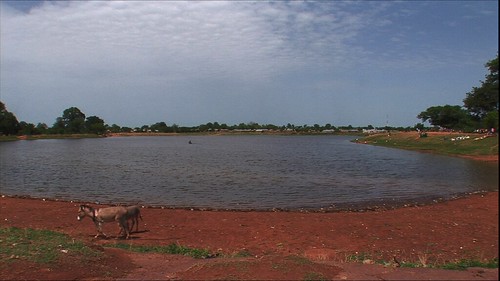Discover the Basic Elements Needed in a Home Made Water Filter

Suppose that you are a student in the local Middle School. Suppose that your teacher has asked you to enter a project in the upcoming Science Fair. Unless you are a technical wizard, you do not want to try making a robot. You do not have enough time to observe the growth of plants, plants that have been subjected to different conditions. What should your project be? Fortunately, even those with limited engineering skills can, in a limited amount of time, construct a home made water filter.
Even a crude home designed one can demonstrate the concept behind the most sophisticated home water filter. Even a crude home made water filter can transform muddy, fowl-tasting water into clear, good-tasting water. The construction of a home made water filter offers an advantage not available to a budding scientist who decides to conduct a controlled experiment.
As long as the student/scientist uses the proper materials, the resulting filter should function almost perfectly. Granted, it will not be able to remove any bacteria that might be in the water. Aside from that, a home constructed filter can keep those who depend on that filter supplied with ready access to clean water.
A student who planned to make a crude sort of filter would first need to obtain a plastic bottle, a bottle with a cap that could be punctured. The student would also need a thin tube, such as a straw, cotton, large and small pieces of gravel, and bags of both coarse and fine sand.
At this point the student is almost ready to assemble a crude filter. Three other items should be added to the components in the filter. Those items are a coffee filter, a jar and some muddy water.
A filter must take-in water at one end and release filtered water at the opposite end. The student needs to remove the bottom from the plastic bottle, to insert a straw through a hole in the top of that bottle, and then to invert the entire apparatus (bottle and straw together).
The inverted bottle is inserted in the opening of the jar. Cotton should be the first item in the inverted bottle. On top of the cotton go a layer of fine sand, and then a layer of coarse sand. On top of the sand go a layer of small gravel, and then a layer of large gravel.
The student should cut the coffee filter to fit over the gravel. Once the coffee filter covers the gravel, then the student can pour muddy water into his or her crude filter.
The student has made a functioning home made water filter. That home made water filter should transform muddy water into clear water. Some instructions suggest that cotton does not hold-up well in the crude type of filter described above. Polyester quilt padding can be used in place of cotton.
Moreover, the home made water filter obtained by those who follow the above instructions does not have the ability to remove bacteria from the water. Those who want to drink the filtered water need to add a few drops of chlorine to that water.
There are special media that can be used to remove bacteria from water. In the absence of such media, a student might consider using the type of sponges found in commercial floor scrubbers. A pond enthusiast could thus make a useful home made water filter, one that could remove organic matter.
The pond enthusiast has special needs, needs not found in the typical home. In a typical home, the residents simply want a chance to enjoy clean, pure, great-tasting water. Activated carbon filters with ion exchange and micron filtration are the ideal components for a home filter.
While a home made water filter can never be classed as an ideal filter, it still brings the residents in a home closer to where they want to be. It facilitates the acquisition of water that can keep the residents safe from a majority of unwanted contaminants.
Of course, the ideal water filter, the one with activated carbon, would produce the safest type of drinking water.
No comments:
Post a Comment